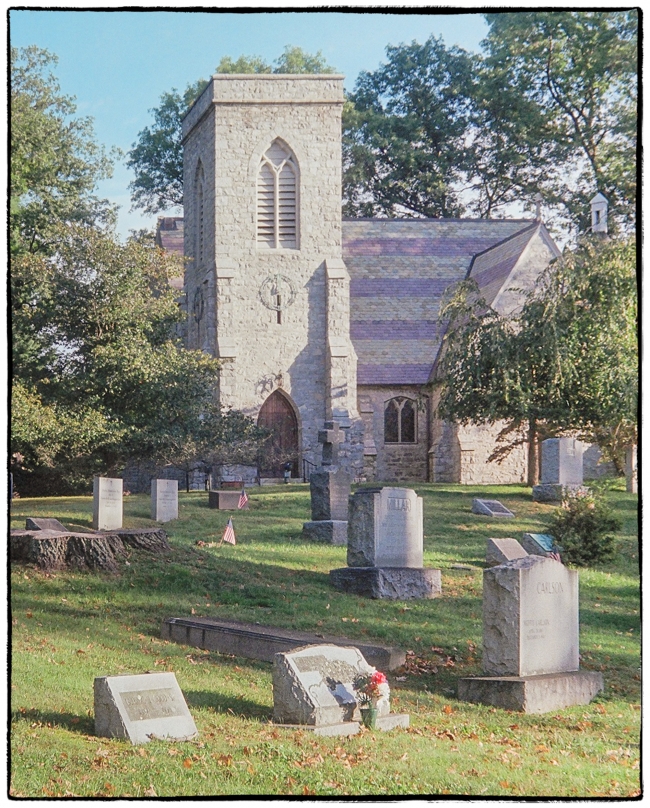Yet another film photograph. I’ve always loved this church – largely because it doesn’t really seem to belong in the US. I’ve seen so many like it in my own country (the UK) that seeing this one really makes me feel at home, and a little nostalgic. In fact the church resembles, to a certain extent, St. Mary’s church in Sandbach, where I grew up.
This one has a rich history. According to Wikipedia:
The church was originally established ca. 1770 when St. Peter’s Church in Peekskill was granted charter by King George III. The wardens, Beverley Robinson and Charles Moore, decided to establish a parish to the north, in the area known as Four Corners, to serve families in that area. After a short period in another church and a parishioner’s home, a small wooden chapel was built where the present church stands. The current graveyard was also started at the same time. The new complex was possibly named St. Philip’s in honor of the Philipse family, original patentees of the area and Robinson’s in-laws.
The Rev. John Doty, the first rector of both churches, left for Nova Scotia after a few years as he was a staunch Loyalist in an area increasingly divided over revolutionary politics. Robinson, too, declined an invitation from his friend John Jay to swear allegiance to the newly created United States, and actively worked to support the British by organizing the Loyal American Legion and coordinating intelligence-gathering efforts. His lands and home were eventually confiscated by the new government of New York, and he left for England after the war, never to return.
A similar fate would befall half of St. Philip’s families, and the church was so despised locally for its Tory associations that legend has it a mob came together to burn it down at one point during the later years. They were supposedly dissuaded from doing so by George Washington himself, who stood at the door and said “That, sir, is my church!” In gratitude the stained glass window in the church’s vestibule depicts him.
…
A new pastor, the Rev. Charles Frederick Hoffman, arrived in May 1860. The completion of the Hudson River Railroad through nearby Garrison Landing had made the community more accessible to New York City and a desirable place to live for some of the most socially prominent families of the day, many of whom were congregants. Hoffman saw that the growing church needed a new building.
His congregation responded. Henry Belcher donated three acres (1.2 ha) for the building and grounds, and others raised $10,000 for its construction. The design came from another worshipper at St. Philip’s, Richard Upjohn, already famous for Manhattan’s Trinity Church. The new structure, a one-story Gothic Revival building of gray granite, was finished in 1861 and consecrated the next year.
In the decades afterwards, a carriage house and shed were built near the church. At the turn of the century, a parish house was built.
The picture was taken with a Fed 2 rangefinder camera and Fed 50mm f3.5 collapsible lens (based on the Leitz Elmar). I believe the film was Kodak Gold 400.
For a more complete history of St. Philips Church see (in a variety of different formats) History of St. Philip’s church in the Highlands, Garrison, New York, including, up to 1840, St. Peter’s church on the manor of Cortlandt by Chorley, E. Clowes (Edward Clowes), 1865-1949

